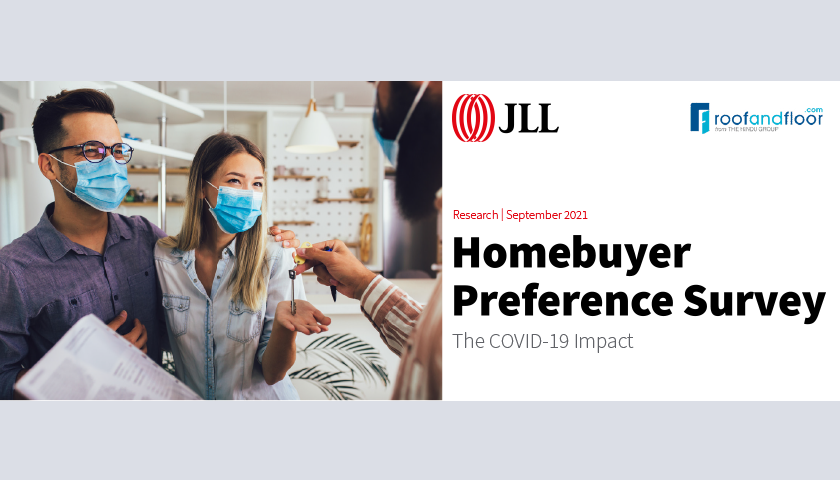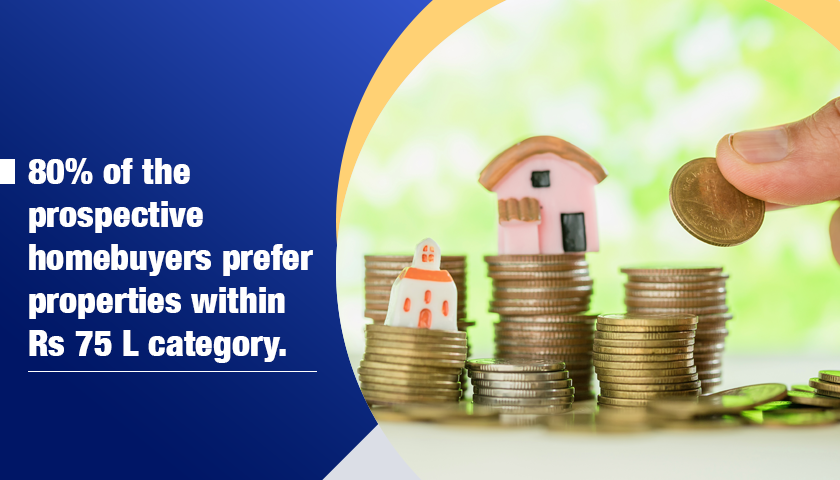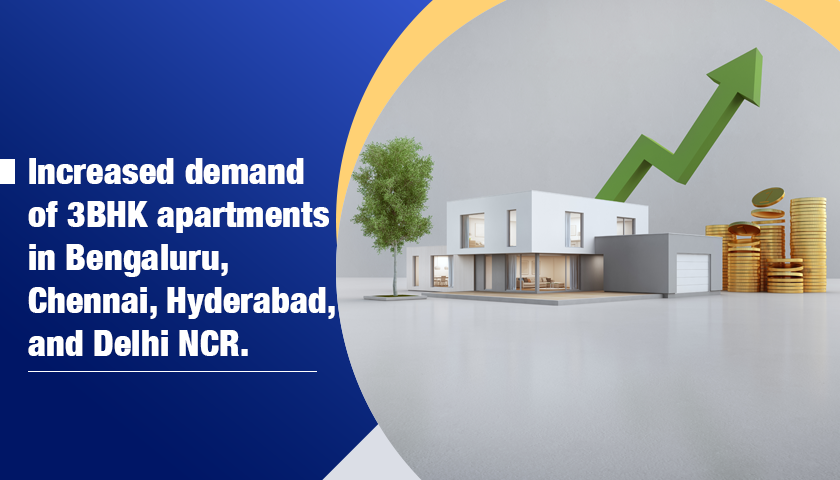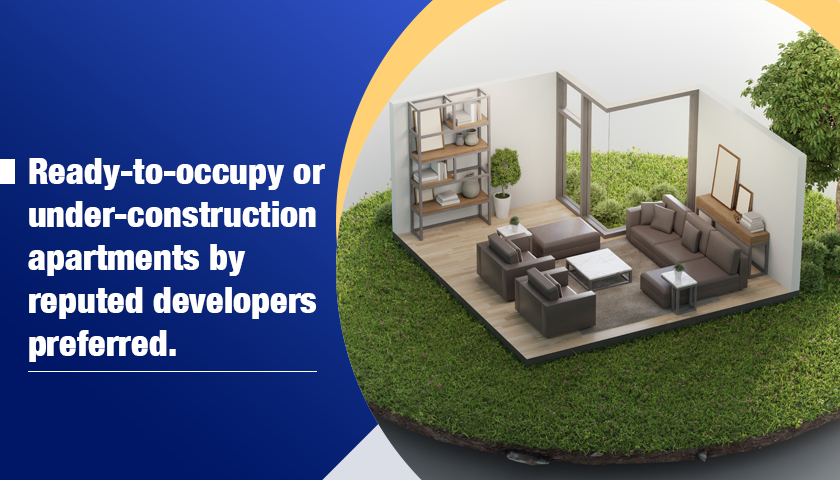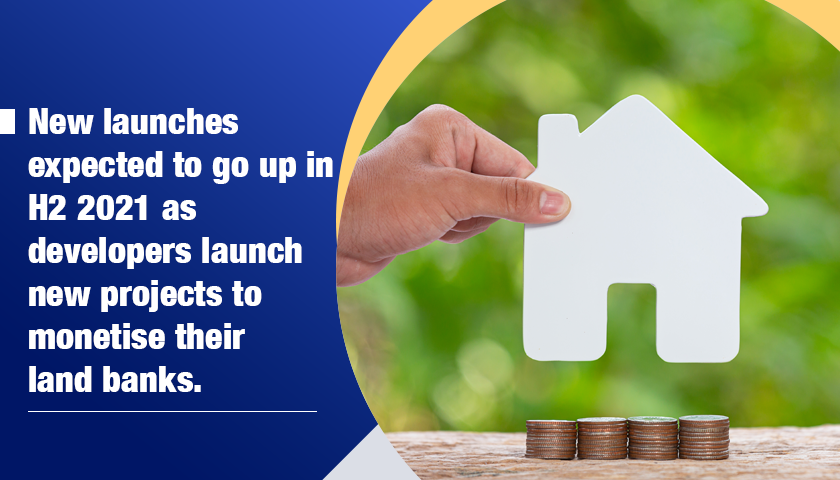Majority of the respondents, almost 89% of those surveyed, wanted to buy a home when asked to choose between buying and renting, according to ‘Homebuyer Preference Survey 2021: The COVID-19 Impact’ by JLL in association with RoofandFloor released today. Most of the buyers making a home purchase decision for self-use fall within the following three distinct categories, with an increase in the proportion of buyers in the two latter categories:
- The first-time homebuyers
- Homebuyers upgrading to larger or better houses and
- Homebuyers purchasing a second asset to be used as a holiday home
The market survey covered more than 2,500 prospective homebuyers with respondents spread across the top six cities of Mumbai MMR, Delhi NCR, Bengaluru, Hyderabad, Chennai, and Pune.
The lockdown induced forced homestay has brought about a need for the sense of security that comes with having a roof over our heads. Self-use continues to be the primary reason for home purchase even today. So much so that in certain markets like Hyderabad, which have seen a reasonable appreciation in home prices over the last few years, increasing interest from investors was witnessed as they found this to be an opportune time to strike a good deal with developers.
According to the survey, nearly 80% of the prospective homebuyers indicated a preference for properties in the sub-INR 75 lakh category. This hasn’t changed much over the course of the pandemic. Nevertheless, the size of the apartment has assumed greater significance and there is a clear preference for larger, more spacious homes. Infact, the buyers are today showing a greater willingness to relocate to suburban/peripheral markets to get larger homes while keeping the budget intact.
Cities like Bengaluru, Chennai, Hyderabad as well as the Delhi NCR market are the prominent cities where the demand for 3BHK apartments has increased. Layouts of apartments, presence of balconies and an additional small room for work/online classes are in focus. This trend is more prominent in the cities of Mumbai and Pune where 1BHK and 2BHK are usually the most sought-after configurations.
“With more than 80% of the prospective homebuyers expected to make a purchase in the next three months, the residential market is expected to get back on the recovery path and 2021 is likely to end on an optimistic note. Developers are launching optimal sized houses to capture the changing preferences of consumers in the post-COVID era. While some of these changes will be fleeting in nature, others will be permanent. In the residential real estate sector, there is still a great deal of uncertainty around ‘what permanent changes we are likely to witness,” said Siva Krishnan, Managing Director, Residential Services, India, JLL
Homebuyers remain optimistic about the future amidst the current volatile business environment and consumer sentiments. Importantly, lockdown restrictions across cities are being eased and the vaccination drive is gaining significant momentum. If the impending Covid-19 wave can be contained and consumer sentiments improve further with the festive season, the sector is expected to make a healthy recovery in the second half of 2021. New launches are expected to go up in H2 2021 as developers launch new projects in order to monetize their land banks,” stated Dr Samantak Das, Chief Economist and Head of Research & REIS (India), JLL.
“Furthermore, structural reforms within real estate in the last few years started the process of weeding out smaller, unorganised developers from the market. The COVID-19 pandemic was the final nail in the coffin as it tilted the scale further in favour of established developers. Most of the new launches, especially during the pandemic months have been driven by reputed developers,” he further added.
“Post ‘Unlock 1.0’ of 2020, the uptick in residential sales was primarily driven by pent-up demand and the presence of ‘affordable synergy’ in the market. However, sustained recovery in the next few quarters and the resilience shown during the second COVID-19 wave are indicative of a fundamental shift in the sentiment towards home ownership. Residential real estate is an enabler of our existence and contrary to popular belief, recovery in the residential sector was quick and more resilient,” said Sriram Krishnaswamy, COO, RoofandFloor.
Buyers planning on making a purchase within the next 3 months
Developers have been operating on very thin margins for the past few years. As the market recovers, reputed developers are becoming less flexible in terms of offering price discounts and other benefits to homebuyers. Prospective homebuyers want to make the most of this ‘great time to buy a house’, with more than 80% of the prospective buyers inclined towards buying a house in the next 3 months.
Changes in decision making matrix: New paradigms emerge
Connectivity to office and schools’ no longer dictates home purchase decisions. Lower density environments, access to open green spaces, access to healthcare and the size of the apartment have moved up in importance in the decision-making matrix. Developers have also taken cognizance of the changing preferences and are open to customisation to suit buyer needs.
Additionally, developer profile now occupies an even more significant position in the decision-making matrix. There is an increased preference and willingness to pay a premium for projects by developers with an established track record.
The work from home phenomenon is here to stay and this has titled homebuyer preferences towards peripheral submarkets. Today, prospective buyers are more willing to take up the occasional longer travel to work in exchange for spacious homes at affordable rates in less crowded spaces.
Residential market to get back on the recovery path
The recovery process, which started in Q3 2020, was derailed in Q2 2021 because of the second COVID-19 wave. With most of the prospective homebuyers expected to make a purchase in the next 3 months, the residential market is expected to get back on the recovery path and 2021 is likely to end on an optimistic note. New launches are expected to go up in H2 2021 as developers launch new projects to monetize their land banks. Moreover, we might even see a reversal in trends with developers launching larger sized houses and apartments to capture the changing preferences of consumers in the post-COVID era.
Most of the changes witnessed in the sector have been structural in nature and demand for homes is only expected to increase. Importantly, lockdown restrictions across cities are being eased and the vaccination drive is gaining significant momentum. If the impending Covid-19 wave can be contained and consumer sentiments improve further with the festive season, the sector is expected to make a healthy recovery in the second half of 2021.

